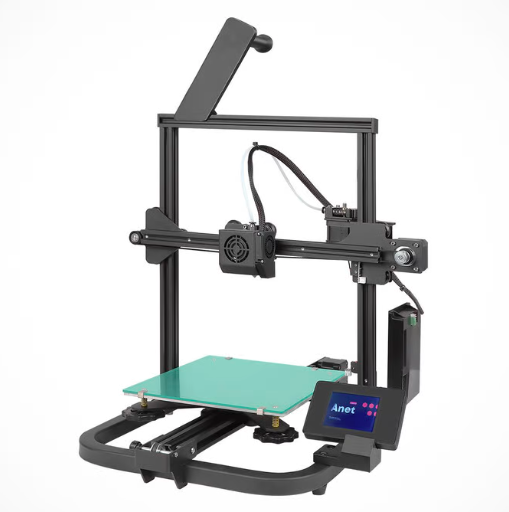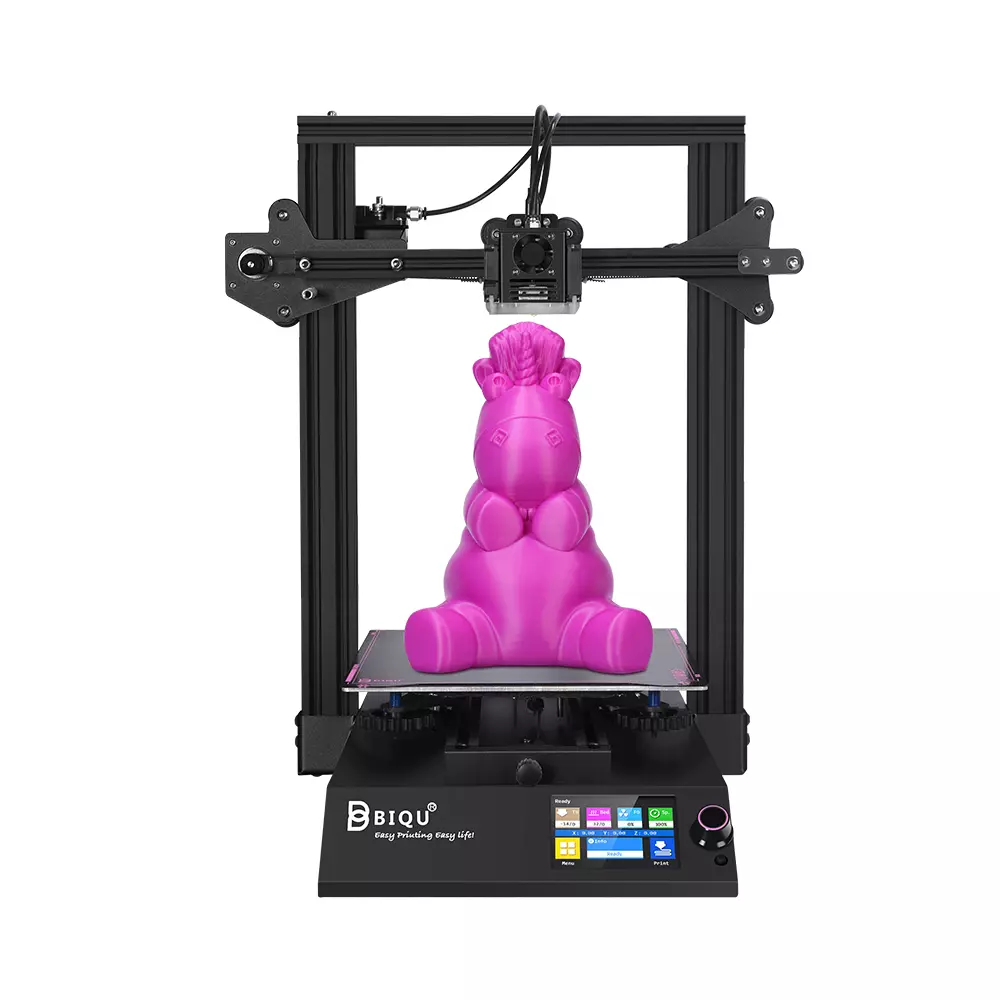Compare A8 V2 vs BIQU B1
Comparison between the best 3D printers
Choose the best 3D printer at the best price. The cheapest 3D printers are here.
Buy a 3D printer here with 3D Fila.
 |
 |
|
| Model | A8 V2 |
BIQU B1 |
| Printing Material | Filament | Filament |
| Buy Filament for Anet A8 V2 | Buy Filament forBigTreeTech BIQU B1 | |
| Estimated price | $129,00 | $269,00 |
| Manufacturer | Anet | BigTreeTech |
| Release Year | 2021 | 2020 |
| Print Volume [mm] | 220x220x250 | 235x235x270 |
| Printer Size [mm] | 428x441x486 | 412x402x492 |
| Weight [kg] | 6,2 | 8,00 |
| Power Loss Recovery | NO | YES |
| Enclosed printer | NO | NO |
| Bed Leveling | Manual | Manual |
| Filament End Sensor | NO | YES |
| Bed type | Heated | |
| Power supply system | Bowden | Bowden |
| Standard nozzle | 0,4 | 0,4 |
| Maximum Nozzle Temperature [°C] | 230 | 250 |
| Maximum Bed Temperature [°C] | 100 | |
| Maximum printing speed [mm/s] | 150 | 100 |
| Filament holder | YES | YES |
| Camera for supervision | NO | NO |
| Recommended filaments | PLA | PLA, TPU, ABS, PETG |
| Recommended slicers | Cura, Simplify, Slic3r, IdeaMaker | Cura, Simplify, Slic3r |
| Maximum Resolution [mm] | 0,1 | 0,1 |
| Processor | 32 Bits BTT SKR V 1.4 | |
| Display | Display touchscreen 2,8'' | Touchscreen TFT 3,5'' |
| Power Supply | 110/220V / 250W | 24V / 360W |
| Connectivity | SD / USB | SD / USB |
| Operating systems | Windows, Mac, Linux | Windows, Mac, Linux |
| Date of registration in the system | 2022-11-10 | 2021-04-14 |
| Release date | 2021 | 2020 |
| Extra features | The Anet A8 V2 is a Cartesian-XZ type 3D printer with a build volume of 220 x 220 x 250 mm, Ender 3 design and V-slot assembly. It has a 32-bit motherboard and touchscreen interface, promising ease of use. It uses open source firmware and has thermal failure protection. It stands out for its cable organization and the absence of a heated bed, focusing on energy savings and PLA printing. It comes with an external power adapter, aiming at greater safety, especially for beginners and educational use. | The BIQU B1 is an advanced 3D printer with a silent 32-bit BTT SKR V1.4 motherboard and ARM Cortex-M3 CPU, offering DIY interfaces (I2C, SPI, WiFi) and dual Z-axis. Its dual BTT B1 TFT35 V3.0 operating system allows real-time monitoring and multiple printing modes, including G-code visualization effects. It stands out for its BIQU SSS (Super Spring Steel), ensuring easy model adhesion and simplified removal, with the possibility of using it on both sides. It includes a filament sensor, automatically pausing printing in case of filament breakage. The multicolored RGB lights integrated into the hotend allow you to view the printing status even at night. Additional notes include the need for a BIQU-specific Type-C cable and extra interfaces for smart filament sensor and BL Touch. |
| Support for multiple colors and materials (AMS and CFS) | NO | NO |
Notes * |
||
| Cost-benefit | 6 / 10 | 6 / 10 |
| Hardware | 0.6 / 10 | 2 / 10 |
| Tela | . | . |
| Print volume | 3 / 10 | 3 / 10 |
| Performance | 1 / 10 | 0 / 10 |
Conclusion |
| In comparing the Anet A8 V2 and the BIQU B1, both 3D printers present distinct advantages that cater to different user needs and budgets. The Anet A8 V2, being more budget-friendly, is positioned as a solid option for entry-level users or those focused on simple PLA printing. This model features a smaller print volume and lacks advanced capabilities such as power loss recovery and filament sensors. However, it offers ease of use with a touchscreen interface and a decent maximum printing speed, making it suitable for beginners or educational purposes. That said, its design compromises, such as the absence of a heated bed and minimal safety features, may not satisfy more serious users. Conversely, the BIQU B1 is a more advanced machine, justifying its higher price with features like power loss recovery, a filament end sensor, and enhanced print volume capabilities. Its dual Z-axis and advanced silent motherboard provide superior performance and reliability. The BIQU B1 also supports various filament types, positioning it as a versatile choice for users looking to experiment with different materials. Furthermore, the ease of use and real-time monitoring capabilities cater to users who prioritize efficiency and convenience. In summary, the choice between the two hinges primarily on user intent and budget. For novice users or those with simpler needs, the Anet A8 V2 offers an accessible entry point into 3D printing. However, for those seeking performance, advanced features, and flexibility, the BIQU B1 represents a worthwhile investment despite its higher cost. Ultimately, it's essential to consider long-term printing goals and budget constraints when deciding on the best printer for your needs. |

